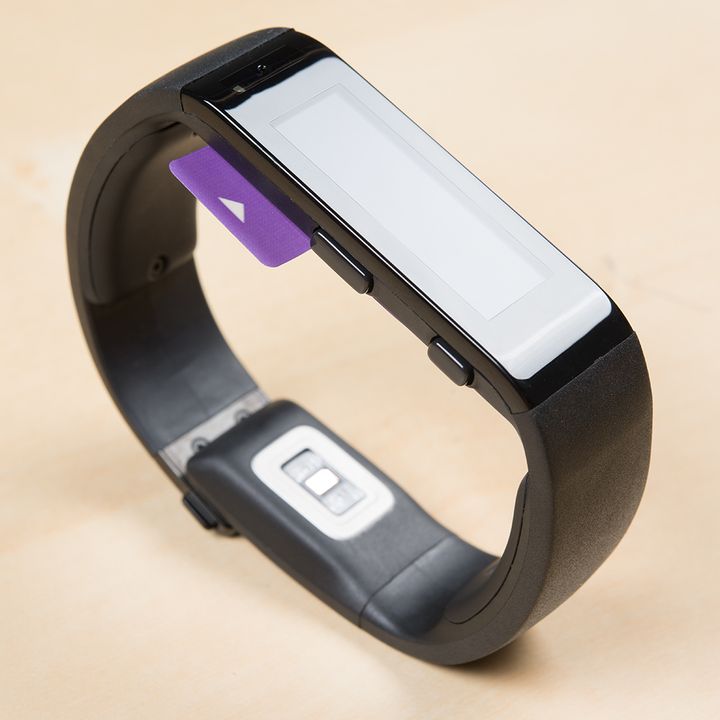
For those of you that don’t already know, AMR stands for Active Metabolic Rate. Essentially it is the amount of calories you burn in a typical day. It is believed to be more accurate than the previously used standard of Basal Metabolic Rate, or BMR. BMR only measured calories burned at rest, and did not incorporate activity levels into the equation.
With the recent explosion in popularity of fitness trackers, more and more people are using calculations from these devices to decide how many calories to eat in a day in order to burn fat and lose weight.
But there are a few problems with the standard AMR system which tend to revolve around accuracy.
For starters, the typical AMR calculation doesn’t give anywhere enough importance to activity that isn’t exercise. And this can be something that makes a huge difference to your ability to lose weight.
I know someone who I have trained and written diet programs for and who has no end of difficulty losing weight. Their diet is incredibly low in calories, highly lean and very healthy. Meanwhile, their exercise schedule is pretty intense and involves multiple trips to the gym. Yet they keep gaining weight.
My wife on the other hand eats whatever she likes and stays very thin. This is partly due to biological differences which we’ll come to later but it’s also to do with lifestyle. What I eventually worked out was that the person I was training was completely inactive 99% of her life.
While she exercised for a few hours a week, she actually had no walking in her commute. She would get the train from just outside her house and be dropped practically at her door. She then worked sitting down and got up only briefly for lunch – which she ate in the garden outside her office. My wife on the other hand has to walk 10 minutes this end to get the train and then 30 minutes the other side. She also walks 10 minutes to and from the place where she eats lunch and does a lot of walking at the weekends.
Even if you count the commute alone, that’s 50 minutes of walking a day and it makes a difference.
This is where a fitness tracker can come in very handy: it shows us just how active we’re being and it lets us calculate a much more accurate AMR and see how this varies from day to day. This also lets you see how many calories you burn when you exercise and it lets you do the amount of exercise you need to increase your calorie burn to the point where you’re in a deficit again.
If you’re keen to lose weight and you’re focussing largely on calories, then I can highly recommend picking up a fitness tracker which will be a very powerful aid in that goal.
How Fitness Trackers Work
In order to get the most from your fitness tracking, you need to make sure you invest in the right one.
Almost every fitness tracker will act like a pedometer and count the number of steps you take in a day. This is not a particularly useful feature though seeing as most phones can now do the same thing and seeing as you can’t really estimate AMR based on that alone.
The better fitness trackers then are the ones that also measure your heart rate. This is a much better system because it means you can measure actual exertion and because it means that you can monitor activities other than walking – like punching, carrying or lifting weights.
Likewise, these fitness trackers also do other things in many cases such as measuring elevation with a barometer. This is cool as it can look at how fast you’re walking versus the gradient of the ground and your heart rate and use this to give you some information about your general fitness. More advanced units also contain GPS functionality for monitoring your routes on runs and can thus double up as running watches.
Fitness trackers that measure heart rate generally work using an optical sensor. This measures something called ‘pulse oximetry’ which means it is looking at changes in the appearance of the blood which says something about the levels of oxygenation. As your heart beats in order to circulate blood and oxygen, this means your oxygenation will fluctuate with each beat. In turn, this means that the amount of light being reflected by your veins will vary on each heartbeat and that can be used to work out your heart rate.
Unfortunately, this has limitations. The first limitation is that it is battery-hungry and that means that most heart rate monitors are not continuous throughout the day – only during exercise. The other problem is that blood oximetry is also affected by other things. For instance, when you tense your muscles this can also cause changes in your blood. Only the smartest fitness trackers have the necessary sensors and algorithms in order to account for these changes and thereby give you the most accurate readings.
How to Incorporate a Fitness Tracker
The most accurate fitness tracker when it comes to monitoring heart rate is currently the Microsoft Band 2. This uses smart algorithms to account for changes in your activity levels. Unfortunately though, the Microsoft Band 2 also has one of the poorer battery lives and this means that it won’t constantly take your heart-rate. The Band 2 takes your heart-rate during exercise every second and this gives you a very consistent and accurate reading. The rest of the time though, you only get a reading every 10 minutes. This means that if you should jog up a hill for a couple of minutes, that might be completely missed in your readings unless you tell the Band to be looking out for it.
Conversely, the Fitbit Surge (for example) is not as accurate as the Microsoft Band 2 and many people complain that the heartrate readings are in fact a little off-base. However, the product does have the advantage of taking a reading every 10 seconds during daily use. And if it notices that your heartrate goes up during this time, then it will start paying more attention and take more frequent recordings. This means that if you go for a spontaneous run or a spontaneous jog, then you should find it is reflected in your readings.
Though because the heart rate monitor is a little off base, those readings might not be entirely accurate.
So it’s swings and roundabouts and you need to take your readings with a grain of salt for now. But as a general tool you can use to estimate your calories burned, it’s probably still more accurate than calculating your AMR by hand. And during exercise, the Microsoft Band 2 can give very helpful and useful readings. What’s more, is that you can use it in order to learn a little more about how and when you are burning the most calories as well as areas that you could improve.
For me personally? I was shocked at how few calories I would burn during weekends when I wasn’t doing anything. I quickly realized that I needed to incorporate more activity such as walks if I didn’t have anything planned!
As for logging the calories you take it, you can use many apps such as My Fitness Pal to streamline the process and allow for a more accurate overall total.
The Bottom Line
If you are a weekend warrior, or someone who just likes to try new things and gets bored of them quickly, you may want to invest your money elsewhere. However, if you are a true fitness enthusiast, or if you really want to get serious about weight loss, a fitness tracker can be an incredibly useful tool.
About the Author
Justin Arndt is the Senior Content Editor at http://loseweight.io and has also written a book called, Lose Weight Fast: Weight Loss Secrets of Professional Athletes due out this fall.
